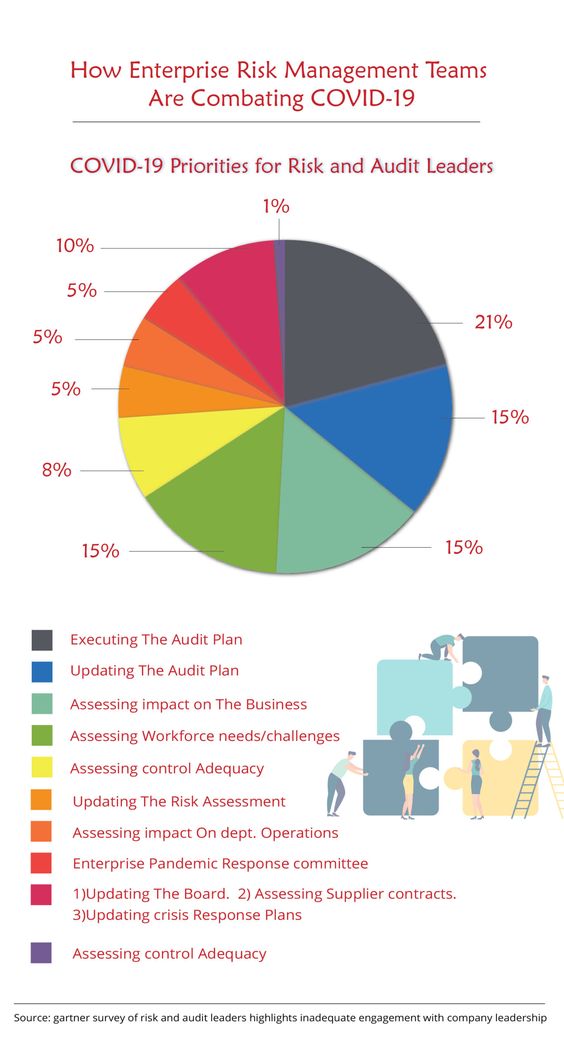What is Enterprise Risk Management?
Risk management is an important part of any business. It is the process of identifying, assessing, and responding to potential risks that could affect the success of a business. Enterprise risk management (ERM) is a framework that helps organizations identify, assess, and respond to risks more effectively. This article will discuss the components, benefits, and process of ERM, as well as the strategies and tools used to manage risk.
Enterprise risk management is a systematic approach to managing risk across an organization. It involves analyzing the potential risks that could affect the success of the organization and taking steps to minimize or eliminate those risks. ERM is a comprehensive approach that looks at all aspects of the business, from financial to operational to strategic. It helps organizations identify potential risks and develop strategies to mitigate them.
Components of Enterprise Risk Management
There are four main components of an ERM framework:
1. Risk Identification: This involves identifying potential risks that could affect the success of the organization. This can be done through a variety of methods, such as brainstorming sessions, surveys, interviews, and risk assessments.
2. Risk Assessment: This involves assessing the likelihood and impact of each identified risk. This helps organizations prioritize risks and determine which ones need to be addressed first.
3. Risk Response: This involves developing strategies to minimize or eliminate the identified risks. This can include developing policies and procedures, implementing controls, and training employees.
4. Risk Monitoring: This involves monitoring the effectiveness of the risk response strategies and making adjustments as needed.
Benefits of Enterprise Risk Management
ERM provides organizations with a number of benefits, including:
1. Improved decision-making: ERM helps organizations make better decisions by providing a comprehensive view of risks and their potential impacts.
2. Enhanced performance: ERM helps organizations identify and address potential risks before they become problems. This can help improve organizational performance and reduce costs.
3. Improved communication: ERM helps organizations communicate more effectively about risks and their potential impacts. This can help ensure that all stakeholders are aware of the risks and can make informed decisions.
The Risk Management Process
The risk management process involves five steps:
1. Identify: Identify potential risks that could affect the success of the organization.
2. Assess: Assess the likelihood and impact of each identified risk.
3. Respond: Develop strategies to minimize or eliminate the identified risks.
4. Monitor: Monitor the effectiveness of the risk response strategies and make adjustments as needed.
5. Review: Review the risk management process periodically to ensure it is effective.
Risk Management Strategies
Once risks have been identified and assessed, organizations can develop strategies to minimize or eliminate them. These strategies can include:
1. Avoidance: Avoiding the risk altogether by not engaging in activities that could lead to the risk.
2. Reduction: Reducing the likelihood or impact of the risk by taking steps to reduce the risk.
3. Transfer: Transferring the risk to another party, such as an insurance company.
4. Retention: Retaining the risk and accepting the potential consequences.
Risk Management Tools
There are a variety of tools and techniques that can be used to manage risk. These include:
1. Risk registers: A risk register is a document that lists all identified risks and their potential impacts.
2. Risk heat maps: A risk heat map is a visual representation of the risks and their potential impacts.
3. Risk assessment tools: Risk assessment tools help organizations identify, assess, and prioritize risks.
4. Risk monitoring tools: Risk monitoring tools help organizations track the effectiveness of risk response strategies.
Risk Management Governance
Risk management governance involves establishing policies and procedures to ensure that the risk management process is effective. It also involves establishing roles and responsibilities for risk management, and ensuring that the organization has the resources and capabilities to manage risk effectively.
You might find these FREE courses useful
- Empathy and Data in Risk Management
- Identifying, Monitoring, and Analyzing Risk and Incident
- Corporate finance: Know your numbers 2
Conclusion
Enterprise risk management is an important part of any organization. It helps organizations identify, assess, and respond to potential risks more effectively. ERM involves identifying potential risks, assessing their likelihood and impact, developing strategies to minimize or eliminate them, and monitoring the effectiveness of the risk response strategies. It also involves establishing policies and procedures to ensure that the risk management process is effective.





